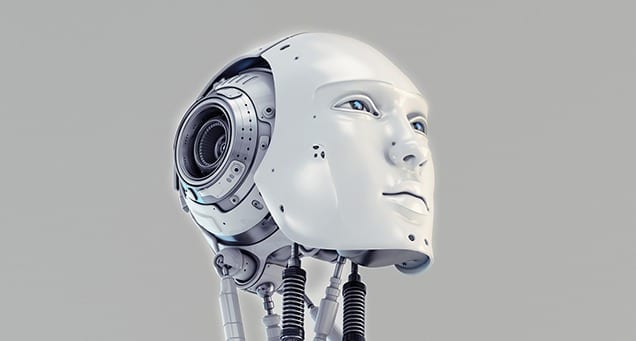
Editor: Philip Ragner | Tactical Investor
Navigating AI and Human Intelligence Landscape
Aug 26, 2023
In today’s rapidly evolving technological landscape, the synergy between AI and human intelligence has become a captivating subject of exploration. The interplay between artificial intelligence and human cognitive abilities reshapes industries, redefines creativity, and challenges ethical paradigms. This article delves into the intricate relationship between AI and human intelligence, uncovering their evolution, impact, and potential future trajectories.
Understanding AI and Human Intelligence
Artificial Intelligence, or AI, is a rapidly evolving field that has made significant strides in recent years. It is a branch of computer science that aims to create intelligent machines capable of performing tasks that would typically require human intelligence. These tasks range from understanding and interpreting natural language to problem-solving to demonstrating creativity. Like the human brain, AI systems are designed to learn and adapt to new information. They can process vast amounts of data, identify patterns, and make decisions based on these patterns.
However, AI is not just about replicating human intelligence. It’s about augmenting it, enhancing our capabilities, and helping us achieve more than we could. AI systems can analyze data at a speed and scale that humans cannot match, making them invaluable tools in fields like healthcare, finance, and climate science. They can help us make sense of complex systems, predict future trends, and make more informed decisions.
Human intelligence, on the other hand, is a complex and multifaceted cognitive ability. It encompasses our capacity to reason, learn, adapt, and innovate. It allows us to understand and interpret the world, solve problems, and create new ideas. Human intelligence is not just about processing information; it’s about understanding context, making connections, and thinking creatively. It’s a unique blend of cognitive functions that has driven our evolution and shaped our world.
The development of AI systems is, in many ways, an attempt to replicate and augment this unique blend of cognitive functions. By creating machines that can learn and adapt like us, we hope to extend our capabilities and achieve things that were previously beyond our reach. However, AI is not a replacement for human intelligence. It’s a tool that we can use to enhance our abilities, help us understand our world better, and solve the complex problems we face.
The symbiotic relationship between AI and human intelligence is a fascinating study area. As we continue to develop and refine AI systems, we are also learning more about our intelligence. We are discovering new ways to augment our abilities, push the boundaries of what is possible, and create a better future for all of us. The keyword here is not just AI or human intelligence but the powerful combination.
The Interplay between AI and Human Intelligence
The dynamic interplay between AI and human intelligence goes beyond mere replication. Inspired by human cognition, AI systems are being integrated into various aspects of our lives, from healthcare to entertainment. The collaboration between AI and human intelligence showcases the potential to amplify human capabilities while pushing the boundaries of technological advancement.
Evolution of AI and Human Intelligence
The dynamic interplay between AI and human intelligence is a fascinating and complex dance. It’s not just about creating machines that can mimic human thought processes; it’s about integrating these AI systems into various aspects of our lives, enhancing our capabilities, and pushing the boundaries of what’s technologically possible. This integration is happening across many sectors, from healthcare, where AI is used to diagnose diseases and develop personalized treatment plans, to entertainment, where it’s used to create immersive, interactive experiences.
Cognitive computing, a subset of AI, is an exciting study area. It focuses on replicating human thought processes in a machine, using data analysis, pattern recognition, and natural language processing techniques. The goal is to create systems that can understand, learn from, and interact with their environment in a way that’s similar to how humans do. This isn’t just about simulating human-like thinking but enhancing our decision-making and problem-solving capabilities.
By analyzing vast amounts of data and identifying patterns, cognitive computing systems can help us make sense of complex situations, predict future trends, and make more informed decisions. They can provide insights that would be difficult, if not impossible, for humans to uncover independently. In this way, cognitive computing is not just replicating human intelligence; it’s augmenting it.
Amplifying Synergy: The Symbiotic Dance of AI and Human Intelligence
The LSI keyword in this context is the symbiotic relationship between AI and human intelligence. It’s about how these two forms of intelligence can work together, each enhancing the other, to achieve things that neither could accomplish alone. It’s about the potential of AI to amplify human capabilities, to help us understand our world better, and solve the complex problems that we face.
As we continue to explore this interplay, we are advancing our technological capabilities and gaining a deeper understanding of our intelligence. We are discovering new ways to augment our abilities, push the boundaries of what is possible, and create a better future for all of us. The interplay between AI and human intelligence is not just a technological revolution; it’s a cognitive revolution, one that has the potential to reshape our world in profound and exciting ways.
Exploring AI and Human Creativity: A New Frontier
One of the most captivating intersections of AI and human intelligence lies in creativity. Traditionally, creativity has been seen as a uniquely human trait, a product of our complex cognitive abilities and rich emotional lives. However, with the advent of AI, this perspective is being challenged. AI-generated art, music, and literature are becoming more common and captivating audiences worldwide, blurring the lines between human and machine creativity.
AI systems can now create stunning visual art, compose original music, and even write poetry and prose. These creative endeavours are made possible by machine learning algorithms that can analyze patterns in existing works of art and generate new creations based on these patterns. But it’s not just about replication; AI can also introduce novel elements, pushing the boundaries of traditional art forms and opening up new avenues for creative expression.
This fusion of AI and human creativity is not just transforming the arts; it’s also changing how we think about creativity itself. It’s prompting us to question what creativity means and whether this trait is exclusive to humans. It’s also highlighting the potential of AI to augment our creative abilities, inspire us, and help us see the world in new and exciting ways.
The Ethics of AI and Human Intelligence: A Critical Dialogue
As AI becomes more integrated into our lives and its influence continues to grow, ethical considerations are becoming increasingly important. The decisions made by AI systems can have profound impacts on individuals and society as a whole. These impacts can be positive, such as when AI is used to improve healthcare outcomes or combat climate change. But they can also be harmful, such as when AI systems perpetuate bias or infringe on privacy.
Addressing these ethical issues is a complex task. It involves ensuring that AI systems are transparent and that their decision-making processes can be understood and scrutinized. It also consists in addressing bias in the data used to train AI systems and in the decisions they make. Perhaps most importantly, it involves aligning the goals of AI systems with human values, ensuring that these systems are used in ways that benefit humanity and respect our rights and dignity.
This dialogue about the ethics of AI and human intelligence is not just a theoretical discussion; it’s a practical necessity. As we continue to develop and deploy AI systems, we need to ensure that we are doing so in a way that is ethical, responsible, and aligned with our values. We must meet this challenge head-on, which we can only overcome through open dialogue, rigorous scrutiny, and a commitment to ethical principles.
Machine Learning: The Engine of AI
Machine learning, a core component of AI, is the driving force behind many of the advancements we see today. It’s a type of AI that allows computer systems to learn from data and improve their performance over time without being explicitly programmed to do so. Machine learning algorithms can analyze vast amounts of data, identify patterns, and make predictions based on these patterns. This ability to learn and adapt is what gives AI systems their predictive and adaptive capabilities.
Machine learning is shaping industries across the board, from finance, where it’s used to predict market trends and manage risk, to healthcare, where it’s used to diagnose diseases and develop personalized treatment plans. It’s also being used in areas like climate science, where it’s helping us understand and predict the impacts of climate change, and in education, where it’s personalizing learning experiences and helping students achieve their full potential.
Enhancing Human Intelligence through AI: A Symbiotic Relationship
AI is not about replacing humans; it’s about amplifying our intelligence. AI tools are being developed and deployed across various sectors to augment our cognitive capacities, enhancing our problem-solving and decision-making capabilities. From language translation, where AI is breaking down communication barriers and fostering global collaboration, to data analysis, where AI is helping us make sense of vast amounts of information and make more informed decisions, AI is enhancing our abilities in myriad ways.
This augmentation of human intelligence is not just about improving our performance in specific tasks; it’s about enhancing our ability to understand and interact with the world. It’s about helping us see patterns, make connections, and generate insights we might miss. It’s about extending our cognitive reach and opening up new possibilities for innovation and discovery.
The Future Landscape of AI and Human Intelligence: A Vision of Partnership
Looking to the future, we envision a landscape where AI and human intelligence form a seamless partnership. We see a world where AI is integrated into every aspect of our lives, from education, where it’s used to personalize learning and foster creativity, to healthcare, where it’s used to predict health risks and deliver personalized treatment.
AI is not a threat to human intelligence but a powerful ally in this future landscape. It’s a tool to extend our cognitive abilities, solve complex problems, and create a better future. This vision is not just about technological advancement but human advancement. It’s about using AI to enhance our intelligence, to unlock our potential, and to shape a future that reflects our values and aspirations.
AI in Education: Transforming Learning Experiences
The integration of AI in education is revolutionizing the learning process. AI-powered adaptive learning platforms can tailor lessons and assessments to each student’s unique needs and learning style. This personalized approach helps students learn at their own pace, with targeted feedback and interventions when needed. Intelligent tutoring systems leverage AI to provide customized instruction, interactive practice, and real-time guidance – supporting students’ mastery of concepts through individualized learning paths.
Automated assessments enabled by AI offer efficient, consistent evaluation of student work. AI can analyze written responses, providing granular insights into students’ knowledge and skill levels. These formative assessments support educators in identifying gaps in understanding, adjusting instruction, and accelerating learning. Overall, AI’s thoughtful integration in education enhances instruction, assessment, and the learning experience.
AI and Human Intelligence in the Workplace: A Productive Alliance
AI transforms roles and workflows across industries by automating routine tasks and augmenting human capabilities. In the workplace, AI takes over high-volume repetitive tasks, freeing up employees to focus on more strategic initiatives that require critical thinking, creativity, and interpersonal skills.
AI also enhances productivity by providing data-driven insights that inform decision-making. Rather than replacing humans, AI amplifies our intelligence – helping us process and analyze vast amounts of data to uncover patterns, predict trends, and optimize processes. This symbiotic relationship enables humans and AI systems to accomplish more together than they could.
Developing AI ethics and governance frameworks will be vital in ensuring this technology is deployed responsibly and for the benefit of workers. AI is poised to collaborate with humans, enhancing productivity, innovation, and job satisfaction across industries.
Neural Networks: The Brain of Deep Learning
Neural networks are foundational to many of AI’s recent advances. Inspired by the human brain’s interconnected web of neurons, these artificial neural networks comprise layers of superficial computing nodes. Each node processes and transmits information, enabling the network to learn from data collectively. Through exposure to vast datasets, neural networks can recognize intricate patterns and make increasingly accurate predictions and decisions.
This neural network architecture is powering breakthroughs in computer vision, natural language processing, recommendation systems, and more. In computer vision, neural networks can now reliably analyze visual data to identify objects, faces, and scenes. For natural language processing, neural networks help machines parse, understand, and generate nuanced human language. Neural networks are also core to recommendation systems, analyzing our patterns and preferences to surface personalized content and products.
As neural networks grow more advanced, they will push AI capabilities forward across sectors like healthcare, transportation, and education. However, transparency and ethics must guide the development of these powerful systems to ensure they benefit humanity. Overall, neural networks represent the driving force of AI, fueling innovations that enhance knowledge, productivity, and the human experience.
AI, Human Intelligence, and Emotional Intelligence: An Evolving Intersection
Emotional intelligence remains a uniquely human hallmark, underpinning our social interactions and relationships. However, AI is making inroads in recognizing and responding to human emotions, bringing this technology to the emotional and social intelligence frontier.
AI now leverages natural language processing and sentiment analysis in customer service to perceive emotions like frustration or satisfaction. AI agents can adjust their tone and responses accordingly, providing a more empathetic user experience. Researchers are developing AI chatbots for mental health support that can recognize signs of anxiety, depression, and emotional distress through conversation patterns and semantic analysis. These systems aim to increase access to mental health services by providing preliminary screening and interventions under the supervision of human specialists.
While AI shows promise in responding to emotions, truly understanding human emotion’s nuances, contexts, and drivers remains challenging. Emotional intelligence requires lived experiences and social awareness that AI currently lacks. However, as research in affective computing and human-AI interaction advances, we edge closer to AI that can perceive, process, and emulate emotions thoughtfully and ethically.
The Role of AI in Decision-Making: A Data-Driven Approach
AI is transforming decision-making by enabling data-driven insights at unprecedented speed and scale. By quickly analyzing massive datasets, AI can uncover patterns, risks, and opportunities that would be impossible for humans to discern.
Across sectors, AI-powered analytics are optimizing decision processes. In business, AI informs strategies by predicting customer demand, simulating competitors’ moves, and identifying risks. AI also optimises supply chains, logistics, and operations by modelling complex systems. In medicine, AI is aiding diagnosis by detecting anomalies in scans and data that doctors can miss. AI even supports judges by assessing recidivism risk to guide bail and sentencing decisions.
However, while AI can augment human intelligence with data-driven insights, human oversight remains critical. AI is best leveraged to enhance, not replace, human judgment. We can make the most informed decisions by combining AI’s pattern recognition abilities with human wisdom, ethics, and experience. As we advance, developing AI decision-making systems with transparency and accountability will be key to fostering an ethical and symbiotic partnership between humans and artificial intelligence.
AI and Human Intelligence in Healthcare: A Lifesaving Revolution
The healthcare industry is experiencing a transformative revolution powered by the symbiosis of AI and human intelligence. AI’s contributions range from early disease detection and diagnosis to drug discovery and personalized treatment plans. These advancements are not only enhancing patient care but also saving lives.
AI’s role in early disease detection is particularly noteworthy. Machine learning algorithms can analyze medical images, such as X-rays and MRIs, to detect signs of diseases like cancer at their earliest stages, often before symptoms even appear. This early detection can significantly improve treatment outcomes and survival rates. AI is also being used to predict disease progression, helping doctors to tailor treatment plans to individual patients’ needs.
In drug discovery, AI is accelerating the process of finding new treatments. AI can identify potential new drugs and predict their effectiveness and safety by analysing vast amounts of data on disease mechanisms and drug interactions. This can significantly shorten the time it takes to bring new treatments to market, potentially saving countless lives.
Natural Language Processing: Bridging the Gap Between Humans and Machines
Natural Language Processing (NLP) is a branch of AI that focuses on enabling machines to understand and generate human language. This technology is driving advancements in various applications, from virtual assistants to sentiment analysis and language translation.
Virtual assistants, like Siri and Alexa, use NLP to understand spoken commands and respond naturally, human-likely. They can perform tasks, answer questions, and even engage in conversation, making them increasingly useful daily.
In sentiment analysis, NLP determines the emotional tone behind words. This is particularly useful in customer service and market research, where understanding customer sentiment can provide valuable insights.
Language translation is another area where NLP is making significant strides. AI-powered translation tools can translate text or speech from one language to another in real time, breaking down language barriers and facilitating global communication.
Addressing AI and Human Intelligence Bias: A Quest for Fairness
While powerful, AI systems can inadvertently perpetuate biases in their training data. This can lead to unfair outcomes, such as discrimination in hiring or lending decisions. Addressing this issue is a complex but crucial task.
Bias mitigation involves several steps, from ensuring diversity in training data to scrutinizing AI algorithms for fairness. It’s about ensuring that AI systems treat all individuals and groups equitably, regardless of race, gender, age, or other characteristics.
Transparency is also an essential aspect of addressing AI bias. AI systems must be transparent in their decision-making processes, allowing us to understand and scrutinize their decisions. This can help to identify and correct preferences, ensuring that AI systems are fair and equitable.
The quest for fair and equitable AI systems is not just a technical challenge; it’s a societal one. It’s about ensuring that all share the benefits of AI and that AI systems respect our values and rights. As we continue to develop and deploy AI systems, we must remain vigilant to mitigate bias and promote fairness.
Ethical Considerations in AI Development: A Guiding Framework
Ethics play a pivotal role in the evolution of AI. As AI systems become more integrated into our lives and their influence grows, ethical considerations are becoming increasingly important. From ensuring privacy and data security to preventing misuse of AI technologies, a robust ethical framework is required to guide AI development responsibly.
Privacy is a key ethical concern in AI development. As AI systems often rely on large amounts of personal data to function effectively, ensuring that this data is handled responsibly, respecting individuals’ privacy rights, is crucial. This involves implementing strong data security measures and obtaining informed consent for data use.
Preventing the misuse of AI technologies is another important ethical consideration. As AI systems become more powerful, there’s a risk that they could be used in ways that harm individuals or society. It’s important to have safeguards to prevent such misuse and ensure that AI is used to benefit humanity.
Data Mining: Unearthing Valuable Insights
Data mining is a process that involves extracting patterns and insights from vast datasets. It’s a key technique used in AI to uncover valuable knowledge from diverse information sources. Data mining techniques, such as clustering, classification, and association analysis, empower AI systems to analyze large amounts of data, identify patterns, and make predictions.
These techniques are used in various applications, from customer segmentation in marketing to fraud detection in finance. By uncovering hidden patterns and relationships in data, data mining helps us make sense of complex systems, predict future trends, and make more informed decisions.
AI-Augmented Creativity: Challenging Conventional Notions
AI’s foray into the creative domains of art and music raises intriguing questions about authorship and originality. AI systems can now create stunning visual art, compose original music, and even write poetry and prose. These creative endeavours are made possible by machine learning algorithms that can analyze patterns in existing works of art and generate new creations based on these patterns.
This AI-augmented creativity challenges our conventional notions of art and creativity. It prompts us to question what creativity means and whether this trait is exclusive to humans. It also highlights the potential of AI to inspire us, push the boundaries of traditional art forms, and open up new avenues for creative expression.
AI’s Impact on Everyday Life: A Seamless Integration
AI has seamlessly integrated into our daily routines, enhancing convenience, efficiency, and entertainment. From smart homes, where AI-powered devices automate tasks and optimize energy use, to virtual assistants, which help us manage our schedules and answer our questions, AI technologies are becoming an integral part of our everyday lives.
AI is also transforming our entertainment experiences. In gaming, AI is used to create immersive, interactive experiences. AI algorithms recommend content based on our preferences in music and video streaming. These are just a few examples of how AI enhances our everyday lives, making them more convenient, efficient, and enjoyable.
Robotic Process Automation: Streamlining Workflows
Robotic Process Automation (RPA) is a transformative technology revolutionizing industries by automating repetitive tasks. RPA uses software robots, or “bots,” to perform routine tasks that humans previously did. These tasks range from data entry and invoice processing to customer service and IT support.
RPA is streamlining workflows, increasing efficiency, and reducing errors. By automating routine tasks, RPA frees human workers to focus on more strategic, creative, and value-added tasks. This not only enhances productivity but also improves job satisfaction, as workers can concentrate on the aspects of their work that are most meaningful and rewarding.
The Journey towards AGI: The Pinnacle of AI Development
Artificial General Intelligence (AGI) represents the pinnacle of AI development. It’s the point at which machines possess human-like reasoning and problem-solving abilities to understand, learn, and apply knowledge across various tasks. The pursuit of AGI is ongoing, with researchers making steady progress towards this ambitious goal.
The implications of achieving AGI are profound. It could lead to machines outperforming humans at the most economically valuable work, potentially transforming every aspect of our society. However, the journey towards AGI also raises important ethical and societal questions, such as how to ensure that AGI is used for the benefit of all and how to prevent misuse of this powerful technology.
AI and Human Intelligence: An Increasingly Symbiotic Partnership
As AI continues to evolve, its partnership with human intelligence becomes increasingly symbiotic. We envision a future where AI replicates human cognitive abilities and augments them, enhancing our problem-solving capabilities, boosting our creativity, and extending our mental reach.
In the future, AI will reshape industries, automating routine tasks, enhancing decision-making, and driving innovation. It also unlocks new realms of creation, from AI-augmented creativity in the arts to AI-powered breakthroughs in science and technology.
This future vision is not just about technological advancement but human advancement. It’s about using AI to enhance our intelligence, to unlock our potential, and to create a better future for all of us. As we continue to develop and deploy AI systems, we must ensure that we do so in a way that respects our values, promotes fairness, and benefits all of humanity.
Conclusion
The potential for collaboration is boundless in the rapidly evolving landscape of AI and human intelligence. As technology advances, we stand on the threshold of a future where AI complements and amplifies human capabilities, paving the way for unprecedented progress. The intricate dance between AI and human intelligence promises to shape societies, industries, and human experiences in ways we’re only beginning to comprehend.
In conclusion, the integration of artificial intelligence into our daily lives is not just a technological revolution but also a cognitive one. It reshapes our understanding of creativity, transforms industries, and augments our cognitive abilities in unprecedented ways. From the arts to education and healthcare, AI proves to be a powerful ally to human intelligence.
Harnessing the potential of neural networks, the backbone of deep learning, is unlocking solutions to complex problems and driving innovation. In healthcare, AI’s role in early disease detection showcases its life-saving potential, improving treatment outcomes and survival rates.
As we peer into the future, we envision a seamless partnership between AI and human intelligence, aiming for technological advancement and human progress. This vision extends our cognitive abilities, aids complex problem-solving, and strives for a better future. The transformative potential of AI is both exhilarating and a call to ethically and responsibly embrace this technology for the betterment of all.
https://youtu.be/5lbKRSknvNA
Frequently Asked Questions
Q1: What is the relationship between AI and human intelligence?
A1: The relationship between AI and human intelligence involves collaboration and enhancement. AI systems are designed to replicate and amplify human-like cognitive functions, complementing our abilities and reshaping various domains.
Q2: How does AI impact creativity?
A2: AI’s impact on creativity is multifaceted. It produces art, music, and literature, blurring the lines between human and machine-generated content. AI augments
human creativity by offering new tools and perspectives.
Q3: What ethical considerations arise with AI integration?
A3: Ethical concerns encompass bias mitigation, transparency, privacy, and responsible AI development. Addressing these issues is crucial to ensure AI technologies benefit society without causing harm.
Q4: Can AI replace human decision-making?
A4: While AI aids decision-making through data analysis, it doesn’t replace human judgment. AI provides insights, but final decisions often involve nuanced human considerations.
Q5: What is the future of AI and human intelligence?
A5: The future entails a symbiotic relationship where AI enhances human capabilities across industries, from education to healthcare. This partnership can potentially reshape how we learn, work, and innovate.
Q6: How does AI impact healthcare?
A6: AI revolutionizes healthcare by enabling early disease detection, personalized treatment plans, and drug discovery. It enhances diagnostics and patient care through data-driven insights.
Q7: What role does AGI play in AI development?
A7: Artificial General Intelligence (AGI) represents the aspiration to create machines with human-like reasoning abilities. While still a theoretical pursuit, AGI has profound implications for various fields.
Q8: How does AI address biases in decision-making?
A8: Addressing biases involves refining AI training data, developing fair algorithms, and continuous monitoring. Ethical AI development aims to create unbiased and equitable systems.
Q9: What is the potential of AI in education?
A9: AI transforms education by offering personalized learning experiences, intelligent tutoring, and automated assessments. It adapts to individual student needs, enhancing the educational process.
Q10: How can individuals prepare for an AI-integrated future?
A10: Embracing lifelong learning, adaptability, and a deep understanding of AI’s capabilities and limitations will help individuals thrive in an AI-integrated world.
Intriguing Read Deserving of Your Attention

Savor the Flavors of Serbia: Exploring the Delights of Serbian Food

Living Beyond Your Means: Financial Folly Unveiled

The Myth of the Jewish Genome Unveiled

Unraveling Long and Variable Lags in the Stock Market

Vulgar Words: A Psychological Perspective

Record Corporate Debt Garners Attention: A Concerning Development

Mastering Investment: Overcome Herd Mentality Bias

Impact of AI on Human Workforce: Navigating Change

CNQ Stock: Igniting Potential with an Exciting Market Pattern

What Is A Strong Currency: Its and Impact on Economic Stability

Why Is Student Debt A Problem? Simple Fixes

American Power and Gas: Revolutionizing the Energy Sector

Americans favor coffee to stock market investing

The Rich Get Richer The Poor Get Poorer: Socioeconomic Inequality
Overcoming Crowd Phobia: Understanding the Fear of Large Crowds
Is Value Investing Dead (Jan 9)
Irrational markets and Foolish Investor: a perfect recipe for disaster (Jan 5)


